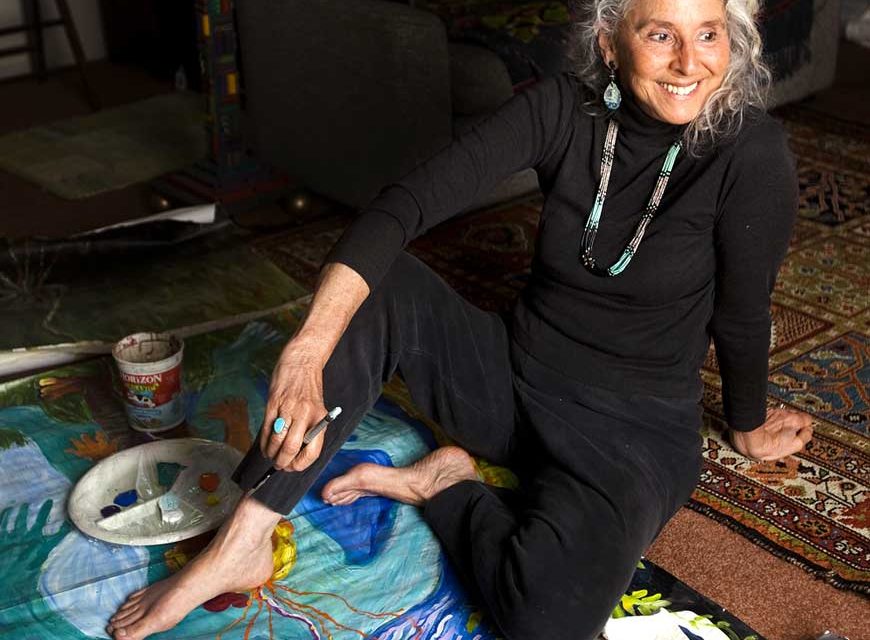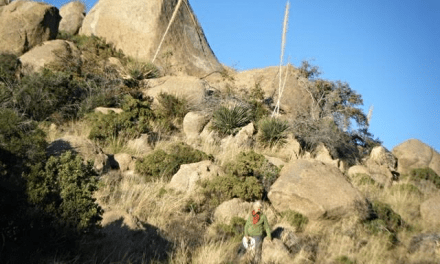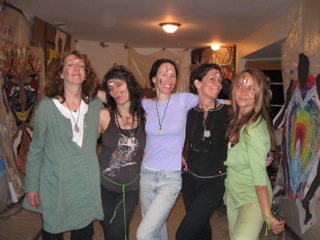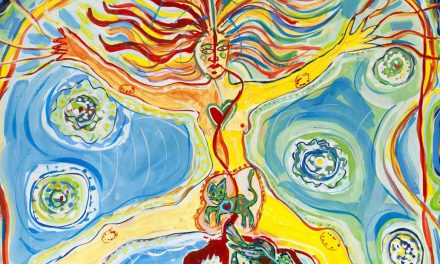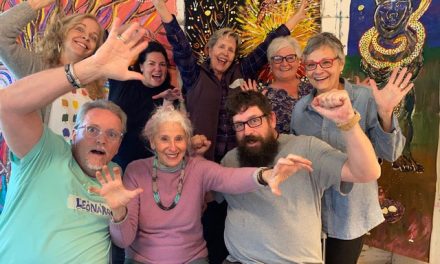Interview with Aviva Gold from The Artful Mind

TAM: What is Painting From The Source?
AG: Painting From The Source is a name I gave to a very ancient and natural process that people have been doing since the beginning of humankind. It’s creating from this very divine, magical place within ourselves. Starting from the very first human being who picked up a piece of charcoal out of the fire in a cave and made an image on the wall – they were drawing from a source. I believe all painters throughout time whose work has been inspired, whom we recognize, whom we write about and learn about in art history have painted from the “source.” It’s a place where creativity lives within us.
TAM: How did Painting From The Source originate?
AG: As a child, I spontaneously painted this natural way. My teachers used to love my work. While all the other kids were doing math and English in second grade, I would be in the back of the room, drawing. I remember as a child, art was so satisfying to me. When I got older, and went to the High School of Music and Art, the meaning of art changed for me. There was the whole “right” and “wrong” thing, there was a style to follow, there were critiques, and I noticed how that natural, sparkling art of mine got buried a little. As I was growing up, I didn’t really have much confidence in my source and that connection with art. I really believe that only the extremely confident young people can hold on to that special, individual way of doing art when going through art training. Formal art training can kill that spark.
All my life I have been trying to get back to painting in that magical way. And only at rare moments, when I was going through a crisis or exhausted would I tap into that source again. And it was really a quest of mine, even when my children were growing up. I wished for the freedom small children have when it came to painting. Moments of altered consciousness – meditation, yoga, even childbirth, some sexual experiences – are moments when we are really challenging creativity and we can get into that source. Thirteen years ago I went to a five-day workshop at the Omega Institute, led by people from San Francisco, and that really helped me. It took all five days to break my previous art training. My training as a art therapist, was too medically oriented. After the Omega workshop, I got started in my work with the goal that this was how I wanted to paint and this was how I want others to paint.
TAM: What were the next stages of development for your workshops?
AG: My first workshop was ten years ago in Carolina. We had twenty people. It was fantastic. I began to rent centers all over the place to give my workshops.
I also knew I had to have a house in the Berkshires. When I found my house, I decided I was going to do my workshops in my home. Fourteen people can fit in my house for a workshop.
TAM: Where else do you conduct your workshops?
AG: In New Mexico, Arizona, Costa Rico, Mexico, Turkey and Holland. I love traveling and going to these sacred places, but it’s got to be fun. It’s got to be a blissful experience.
TAM: Why do people attend your workshops?
AG: Most people just have a desire to become more conscious and aware. They become aware that they have been caught up in the selling of art rather than what their soul really wants them to do, and there are people who have a wish to evolve. A time in their life when they are going through a crisis and they have just recognized that they want to tap into their soul.
When people lose a job, turn forty, divorce, face a death or career change, when the children are all out of the house – they realize how short their life is, and now they need to get into their creative source for answers. Sometime therapists recommend their patients to me because they feel it’s time that they did something nonverbal. There are also people who have a hard time being spontaneous. they know they have been cut off from a really exciting part of themselves and wish they could come back to that.
TAM: I’ve heard that people leave your workshops with totally different attitudes, new outlooks that have often lasted a lifetime. What do you think people leave with after the time spent with you?
AG: They get all the things they came here for. Their health starts improving. It’s what you call a transformational experience. As a painting changes, so do the people. It’s like an alchemy – there’s the quantum leap in the process.
Writers, musicians, photographers, choreographers, and other artists come to diffuse their blocks. And because there is a component that has to do with group bonding and a group experience, it has very powerful social healing aspects. Being part of a group is a very important aspect of the workshops. Every painter, every creative person who is involved in their art, is also healing themselves simultaneously. I believe artists keep themselves healthy physically, emotionally and spiritually by doing their art.
TAM: What is the most important thing people have to know about before they begin a painting in your workshop?
AG: People are overly focused on product orientation and are often too inhibited to face a blank piece of paper. I purposely spend the whole beginning part of the workshop getting across the idea that they must forget about taking home a pretty picture. Paint as if you are going to burn it when it’s complete. It is important to feel the physical, sensuous process of painting – just let yourself play, go wild, and go through whatever blocks you need to go through (sometimes it’s scary and painful to get to this place). I stress that one stays with the painting.
They always end up with something very different from what they started with, but I have them work layers upon layers, encouraging them to stay with it as it grows and changes. We often add more paper if it’s needed. The paintings begin to vibrate with authenticity. It’s so much of what great art is made of.
I tell people that they should not show the painting that they did here to anyone, unless it’s someone thy really trust and feel safe with. And that’s only after a long period of time, and that could be years, when the painting says to them I am ready to be revealed, and to trust that they’ll know in their gut when that time is. When they feel so connected to their source, that no matter what anyone says about their painting, they will not feel vulnerable to insult. Your voice inside is so strong, and it tells you when it’s ready to be viewed.
Others coming to the workshop are people who have never painted, who stopped making art in primary school because their teachers would say, don’t you know cows aren’t blue? Or one of their brothers, sisters or parents was the “artist” in the family, and their was no room for them.
TAM: Do you stress technical drawing skills?
AG: I will give ideas how to mix colors, or have models pose in the position that they need so that they can get it right from observation. It’s very individual. I taught kindergarten through middle school for many years in the school system. I was trained in art education for children. I’ve learned the way to teach art to children is not to teach them at all. Just providing the materials is enough in some ways. There is a natural urge in them to paint, to experience the process of painting. Painting for painting’s sake. If there is something that wants to be painted, out of your own desire to do it, comes the technique. In other words, like the saying, “Necessity is the mother of invention.” This need is very deep. If someone in my workshop needs to paint a tunnel, they’re hot to have depth – and they want light coming through the tunnel (like a dream they had); they naturally will find a technique on their own to show depth. On their own, they will know that they have to have hands held together in prayer, or hands held up to the sky, or letting go of a bird – and they never knew how to draw hands. It’s just something that has to come into their painting. they may look at their hands and study them, copy them to get it just the way they want them to look.
TAM: Do you think that colors have a direct connection to people’s emotions?
AG: I think that everyone has their own set of colors that belongs to them. I really trust intuitively that people will be drawn to the color they need to use. Sometimes people will paint a whole wall in just red, black or turquoise. So many people get hung up on black! they think it means death, they think it’s depressing, but it is such a rich color. It’s the color of the creative void. Sometimes people have a fear of a color maybe from a bad experience. So I purposely tell people to use colors they don’t like, to see what’s in it for them. I always tell people to stay on the edge, so that they feel that they are stretching themselves. I tell them to try this, try that. Sometime people are hung up or terrified because they don’t want to do anything ugly. I’ll tell that person to do the ugliest painting you can make – get it out of your system, and it usually turns out to be exquisite.
TAM: Is art therapy similar to what you teach?
AG: I think what is technically called art therapy in colleges, and what is taught in schools is very different. Traditional art therapy is based on the whole medical model geared toward diagnosis, to interpret what is going on inside a person. I don’t like and won’t work that way. When you paint in this very natural way, whatever is unbalanced in you physically, emotionally and spiritually, will balance itself. You don’t even know what is imbalanced, you’ll just heal it, in the same way that certain dreams are healing. This is like dreaming while you are awake. What happens is that you will go into an altered state of consciousness. After painting for a while, the movement of the colors, the brush and the water, is hypnotizing and you get lost in it. Yet you are awake, so you are allowing whatever needs to happen, to happen.
TAM: Do you feel this is the time of year to hibernate, to germinate?
AG: Throughout history, it has been recognized in many different disciplines and philosophies that there is a time to go inward – a dream time, it just fits with the season. We sleep more and eat differently. Also, people paint differently.
TAM: Aviva, it is clear that you have a strong passion for the entire theory of “Painting From The Source”. Do you feel that teaching art this way was with you before you were aware of it?
AG: I feel that this is my destiny – to do this here, now. Like Johnny Appleseed, whose task it was to plant appleseeds all over the land, that’s how I often see myself; with the mission to disseminate my seeds of wisdom and message of creativity as far and wide as possible.

